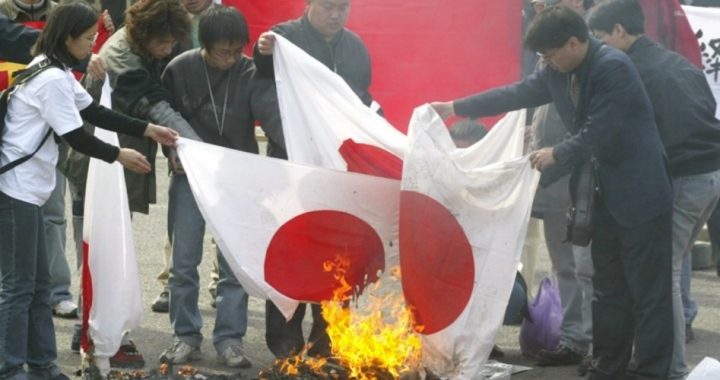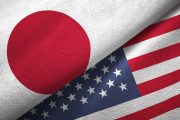
A small archipelago in the East China Sea — known to Japan as the Senkaku Islands and to China as the Diaoyu Islands — is at the center of a series of increasingly angry anti-Japanese demonstrations in China as Japan claims that the tiny islands, which are controlled by China, belong to Japan.
ABC News observed,
Chinese protesters have come out in large numbers to mark the anniversary of the start of major World War II hostilities between Japan and China.
Chinese nationalists are angered by the Japanese government buying a group of disputed islands from a family.
They say the territory … was originally stolen by Japan.
The U.K.’s Guardian reported,
Hundreds of Japanese businesses in China close as protests continue over the countries’ competing claims to the Senkaku islands. … The protests were fuelled on Tuesday by the anniversary of the start of Japan’s 14-year occupation of northern China in 1931.
Anti-Japanese sentiment, never far from the surface, has been building for weeks, touched off by moves by Tokyo and fanned by a feverish campaign in Chinese state media.
The paper noted that paramilitary police are guarding the Japanese embassy in Beijing.
According to CNN, “Panasonic halted operations at three factories in China after angry protesters ransacked Japanese businesses over the weekend amid rising tensions.”
China’s state-run news agency Xinhua reported that more than 10,000 protesters marched in the provincial capital Guangzhou.
The islands represent symbolic differences between Japan and China. The Chinese government is denying involvement in the demonstrations in its country, although the protesters are displaying Chinese mass murderer Mao Tse-tung on their banners as they shout, “Down with Japanese imperialism!”
In the past, China has been involved in other disputes over tiny island chains.
In 1974, the Communist Chinese navy launched an unprovoked attack on the Paracel Islands in the South China Sea, which had belonged to the Republic of Vietnam, thus reinforcing the perception of Communist China as an aggressive regional power. Communist North Vietnam — after defeating the Republic of Vietnam — renewed its nation’s claim to the Paracel Islands, a demand which the Communist Chinese to this day have ignored.
Communist China has also attempted over the decades to capture the Matsu Islands, a tiny archipelago in the Taiwan Strait between Taiwan and mainland China, which has a total population of less than 10,000 people and no natural resources. The Republic of China has successfully defended the islands over the last 63 years, and as with the Paracel and Diaoyu Islands, these tiny islands have value only in redirecting the attention of the mainland Chinese people away from a stagnant economy with a much lower standard of living than Taiwan or Japan and from a brutal authoritarian government that suppresses religious and personal freedom.
The Republic of China, which suffered under imperial Japan and which is daily threatened by Communist China, is close to these tiny disputed islands of Diaoyu. It may have the strongest claim of all to them. After all, the archipelago was placed within the American zone of control after World War II, and the United States long recognized Taiwan as the home to the government of China.
Photo: AP Images



